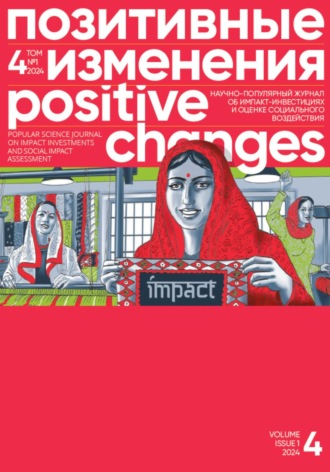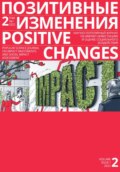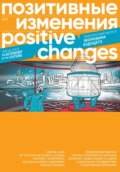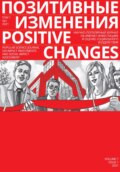
Редакция журнала «Позитивные изменения»
Позитивные изменения. Том 4, №1 (2024). Positive changes. Volume 4, Issue 1 (2024)
For whom does the dawn bell toll? The factors of effectiveness of spatial development projects using the example of South Korea's Saemaul movement[114]
Elena Kim, Natalia Gladkikh
DOI 10.55140/2782-5817-2024-4-1-104-114


Natalia Gladkikh
PhD in Psychology, Leading Expert Institute of Social and Economic Design at the Higher School of Economics

Elena Kim
PhD student and participant in the strategic project “Human Success and Autonomy in a Changing World” at the National Research University Higher School of Economics
The Saemaul Movement[115] was born during the presidency of Park Chung-hee, who stands as both a key person in the “Miracle on the Han River” and a controversial figure, accused of usurpation and dictatorship. Thus, in discussing the remarkable transformation of the Republic of Korea from a war-torn backwater to a global economic powerhouse, one must grasp the intricate, multifaceted narrative that extends beyond the analysis of a single social phenomenon. The statistics are undeniably impressive: since the inception of the Saemaul Movement, GNP per capita has surged from $257 in 1970 to $1394 in 1979, and to $4934 by 1989[116]. As of 2023, according to the Bank of Korea, GNP per capita has reached an average of $33,000.
Undoubtedly, such an economic leap demanded the diverse efforts of the Korean populace, including those in agrarian regions, which were the primary focus of the Saemaul Movement’s influence.
One of the movement’s objectives was a sort of mental revolution, a shift in the mindset of rural inhabitants to reclaim responsibility for their lives, thus paving the way for proactive and initiative-driven farming. It’s evident that something within this framework proved effective. But what exactly?
This article aims to analyze the psychological phenomena that likely not only birthed this unique initiative but also sustained its implementation over half a century, facilitating its expansion into other economic sectors and even other nations. While much has been written about the Saemaul Movement – its phases, content, and critique – we find it crucial to delve deeper into this phenomenon, identifying the internal, psychological, and universal factors that resonate with people’s hearts in the context of Saemaul and similar movements aimed at fostering community development. Without claiming to conduct a comprehensive scholarly study, we attempt to propose several hypotheses that can serve as a foundation for further reflection and research.
THE THREE PILLARS OF THE SAEMAUL MOVEMENT
Let’s start with the basics. The goal of the Saemaul Movement is formulated as follows: “To change our villages for the better.” From the outset, this goal was reinforced by President Park Chung-hee’s rallying cry: "We Can!".[117]
The movement’s flag features a yellow circle symbolizing interaction, wealth, and boundless potential. And the three green leaves represent the hope for success, stemming from the movement’s three pillars: industriousness, self-help, and cooperation.
INDUSTRIOUSNESS
Industriousness is one of the first associations that comes to mind when you think of Korea and Koreans. According to the psychological definition, industriousness is a character trait characterized by a positive attitude toward labor. It manifests in activity, initiative, conscientiousness, passion, and satisfaction derived from the labor process itself.
Psychologically, industriousness implies viewing labor as life’s core meaning, a necessity, and a habit[118].
On one hand, it’s logical to base a reform movement on traits inherent to the populace. Simultaneously, the ideological shift, the mental revolution that was part of the Saemaul Movement, elevated this industriousness to new heights – creating competition among villages. Consequently, after the program’s first year, over 6,000 villages were excluded from the state program due to underperformance, while the remainder received additional resources and rewards from the state. By the end of the movement’s first decade (by 1979), two-thirds of Korean villages demonstrated sustainable viability, with the number of “lazy” villages dwindling annually.
Hence, we can assert that the competitive spirit of industriousness was supported and enhanced by the Korean state apparatus. This approach aligned with Park Chung-hee’s policy of fostering greater individualism among Koreans. Consequently, in the initial years following the Saemaul Movement’s inception, many rural households participating in the program achieved substantial economic growth and, most importantly, ensured stable food security for themselves and their communities[119]. Thus, industriousness, as a national trait of the Korean people, became a fundamental psychological factor contributing to the Saemaul Movement’s success in Korea.
SELF-HELP
Self-help, as one of the three main pillars of the movement, points to a complex set of internal processes involving belief in oneself, one’s own strength, the strength of one’s community, and the willingness to tap into personal and communal resources to improve one’s life and the life of the community.
For the modern individual, self-help is primarily associated with the American ethos[120], emphasizing individual success and fulfillment. Major psychological concepts in this field develop various tools for self-regulation, self-knowledge, and self-development.
But what did Koreans mean by this concept half a century ago? In the context of the Saemaul Movement, self-help was primarily understood as a sense of authorship, a responsibility for the role each person plays in the community’s life. One of their slogans directly translates to: “Do the best you can in your place and decide on your own.”[121]
Psychologically, these are radically different actions:
• The first case involves a reflexive position directed inward, focused on realizing and comprehending events in the external and internal world.
• The second case entails proactive self-determination and the attribution of authorship over one’s own life.
In this article, our goal is not to evaluate these self-help strategies but rather to delineate this understanding and examine the role it played in the success of the New Village Movement.
Leaders of Saemaul acted as driving forces and pioneers, setting examples through their own lives and creating attractive images for other villagers to aspire to. Although elected by villagers, these leaders worked entirely as volunteers without financial remuneration. However, the government closely monitored them and rewarded successful cases with plaques of appreciation, which seems to have played a significant role in maintaining their morale. Thus, self-help served as the mainstay for community leaders, representing a proactive movement toward a common goal.
It's evident that to achieve this, an internal locus of control is necessary, even if it was more external at some point in the past. This shift is understandable given Korea’s nearly half-century under severe repression by the Japanese, during which the Korean language was banned, Korean cultural monuments were destroyed, Korean history itself was rewritten – the environment began to be perceived as uncontrollable, where a person is only a passive victim of the system and circumstances, unable to influence the surroundings.
Such circumstances provided fertile ground for the emergence of learned helplessness which is detrimental in relation to the formation of self-help attitude. It is worth a separate mention in this context. This phenomenon was described by M. Seligman, and according to his definition, it emerges where individuals believe they cannot change, prevent or transform external circumstances, leading them to cease attempts at change even when success is probable. Its manifestations can occur both at the level of an individual and at the level of an entire country.
Returning to the Republic of Korea, we must underscore the psychological transformation the Saemaul movement provided to Korean peasants. It represented a return to personal authorship of life and self-help, defining oneself as responsible for one’s own future and that of one’s people, capable of shaping it with one’s own hands.
COOPERATION
According to the dictionary definition, cooperation is the joint activity of people, involving the distribution of responsibilities, coordination of actions, and mutual assistance and support[122].
The essence of the Saemaul movement lies in building a village/city/country where abundance reigns – materially, spiritually, and, most importantly, not only for oneself but also for one’s neighbor.
This spirit of togetherness runs deep in the Korean mentality. Not only does one’s well-being depend on society’s (the individual as a social consumer), but society’s well-being depends on individual contributions (the individual as a proactive participant and a creator). This is exemplified by the famous story of the 1998 crisis, when Koreans donated 226 metric tons of gold worth $2.2 billion to banks as part of a nationwide campaign. In Korea, gold is not merely a precious metal; it symbolizes significant life events like birth of a child, wedding, retirement; it is more of a symbol than a display of wealth. But this generosity extended beyond gold donations. Young people forwent studying abroad, trade unions refrained from demanding wage increases, and deputies waived salary indexing. In short, everyone contributed to stabilizing the economy.
In contemporary Western “therapeutic culture” discourse, such dedicated commitment might be viewed as a sign of “unhealthiness,” weak ego, and a lack of self-care skills. In Korea, personal success historically belongs to the society. Thus, finding personal meaning in the alignment of motives with goals[123] leads to a high level of individual satisfaction, as it reflects the realization of personal purpose, especially in moments of collective achievement. This could be another psychological factor contributing to the efficacy of the “new village movement.”
HYPOTHESES ON LATENT FACTORS
The aforementioned three factors, both declaratively and practically, served as fundamental pillars, the psychological “soil,” for the successful implementation of the movement. Now, let’s look into several other factors that, with a certain degree of probability, could have served (and continue to serve to this day) as drivers of community activation within the framework of the Saemaul model.
DRAWING INSPIRATION FROM THE OUTSIDE
As the initial successes of the New Village Movement became evident, the government shifted to a more proactive stage – training village leaders and local community heads. Since 1972, specialized training centers have conducted workshops to nurture Saemaul leaders. Their curriculum not only focused on practical leadership skills but also on propagating Saemaul’s principles extensively. Hence, the country’s leadership saw the fusion of economic and ideological components as pivotal to success.
Training at these centers consisted (and continues to consist up to this day) of five blocks:
1. Hands-on learning.
2. Interactive workshops.
3. Case studies.
4. Discussion.
5. Lectures.
It’s noteworthy that only the last block, the fifth one, represents the purely “knowledgebased” component of the training program. The other four involve various levels of practical immersion. This approach aligns with the movement's motto: “Saemaul Movement – Action and Practice.”[124]
Saemaul’s training programs primarily address those immediate challenges that are invariably faced by each of the participants. Screenings of films showcasing successful cases, field trips to other villages and businesses, and the exchange of experiences among participants all aim to bring training as close as possible to the practical realities of new leaders and to motivate and inspire them with stories of success of those already on the path.
Equally important is that training doesn’t end with participants receiving certificates. Ongoing support is provided to graduates, not merely to monitor outcomes, but to assist in resolving complex and conflictual situations inevitable during the implementation of new practices in established village life.
Understanding this factor through the lens of psychology can be framed in terms of Albert Bandura’s theory of social learning. Observing others’ successes can influence perceptions of one’s own abilities, while people’s beliefs about their capabilities shape those very abilities.[125]
The inspirational component stands as a cornerstone in the contemporary international “franchise” of the movement. On one hand, it recounts the Republic of Korea’s success story in rural development, courtesy of the Saemaul movement. On the other, active efforts are made to provide support to project leaders and participants, aimed at bolstering their self-confidence and capacity to improve their territory. This component, grounded in patterns observed by Bandura, appears to be a primary driver of effectiveness. Examining experiences with implementing community development programs in rural areas – such as the Solidarity Communities program[126] – suggests a potential area for growth: increasing the incorporation of inspirational narratives from successful experiences (this component is not as pronounced in them), which could enhance the efficacy of such programs.
DISCIPLINE
In psychology, discipline is explored within the context of outward behavioral displays (compliance with externally imposed demands) and internal attitudes (compliance with self-imposed standards). External demonstrations of discipline may stem from social pressures, but a disciplined mindset is a conscious behavior, irrespective of changing circumstances[127].
History has proven that the citizens of the Republic of Korea stand unrivaled in their demonstration of discipline. Here, in the birthplace of K-pop and Hallyu (the ’Korean Wave’ phenomenon), dozens of pop idols and esports champions are annually molded in strikingly similar fashion – through talent incubators. Following rigorous, if not cruel, selection processes, these young talents sign meticulously regulated contracts, binding their futures to the directives of their production companies. Amidst an atmosphere of ironclad discipline and respect authority, they undergo relentless, highly intensive training sessions aimed at realizing their objectives within specific timeframes.[128]
A glance at the daily regimen of the early leaders of the Saemaul movement reveals striking parallels: “Course participants rose early each morning. At 6 a.m., they assembled in formation on the grounds, saluted the national flag, and sang the anthem, followed by a two-kilometer run. Upon return, they completed requisite hygiene routines (closely monitored), then had breakfast promptly at 7. Lectures commenced at 8, often prefaced by a volunteer sharing success stories from their village. Discussions began at 9, with a particular emphasis on real-life examples of the New Village Movement’s successful implementation. Throughout the day, attendees watched films related to the movement, played soccer or volleyball, and embarked on excursions to nearby villages or rural industries. Physical labor involvement was also encouraged. Evenings were dedicated to discussions.”[129]
Still today in Korea, one can often encounter the so-called dawn bells. Known as Saemaul Bells in English, or the bells of the new village, these traditional Korean bells marked the start of the labor day with their resounding chime at dawn. Unlike their European counterparts, Asian bells often lack internal tongues, though they share a similar shape, resembling inverted bowls. Consequently, their sounds are produced differently, either by striking it with a nearby suspended log or using specialized mallets. These bells remain in village museums, preserving the history of Korean rural life.
Why focus on these dawn bells? Because within their presence and function lies a quintessential trait of the Korean people, a trait that undoubtedly fueled the success of the New Village Movement – the discipline and remarkable industriousness of Koreans, as previously discussed. Whether mid-century peasants rebuilding the nation after decades of Japanese occupation, civil strife, and political turmoil, or contemporary pop idols being at the cutting edge of youth culture, Koreans possess the ability to rise at dawn (and even before) to forge their tomorrows.
One could debate at length the boundaries of the “optimal” level of discipline required for members of community development initiatives to achieve significant outcomes from their efforts – especially considering the potential emergence of the phenomenon of reactive personality resistance in decision-making described by Brehm[130]. This phenomenon manifests as resistance to any limitations on personal freedom, arising when external conditions (other individuals, norms, or rules) encroach upon freedom or threaten to suppress the expression of opinions, views, etc. In essence, it involves imposing a singular behavior or advocating for a specific course of action as the only correct one. Given the potential threat of this phenomenon when organizing discipline and implementing rules, it’s advisable to consider the mechanisms of another psychological decision-making theory phenomenon – personal investment. This involves elevating the value of what an individual has invested their time and resources in, such as by offering suggestions, etc.
In summary, adherence to rules and norms, and the completion of project tasks according to predefined plans, appear to be critical factors for project implementation efficacy, alongside other components requiring a certain level of discipline from participants. However, it’s crucial that all involved residents participate in discussions and decision-making processes. The decision to embrace discipline, adhere to schedules, and complete tasks promptly must be collective, collaborative, ensuring each individual feels a sense of ownership and participation in the decisionmaking process.
FROM SIMPLE TO COMPLEX
One of the defining traits of the New Village Movement can be characterized as its step-by-step ethos. Unlike the Soviet Union’s rigid five-year economic plans, Saemaul didn’t embark with a predetermined outcome but rather unfolded incrementally. It commenced with initiatives aimed at enhancing the living standards of rural communities, starting with the aesthetic rejuvenation of villages. To achieve this, the government allocated each village the renowned 335 bags of cement.
Gradually, straw-thatched roofs were replaced by tiled ones, stone fences and sewage systems underwent repair, and bridges were erected – a metamorphosis unfolded across the countryside. Naturally, this achievement bore psychological dividends: bolstered motivation, created a positive emotional backdrop, and, fundamentally, built self-confidence.
This initial success paved the way for endeavors to augment the incomes of individual households and subsequently, collective initiatives. By the time the average rural household income outstripped that of urban counterparts,[131] the movement transcended village boundaries: its principles permeated businesses and factories, where collaboration was key. According to officials at the Saemaul Center, it’s this movement that underpins the sustained growth of the Korean economy. Ordinary Koreans echo this sentiment: nationwide opinion polls conducted in 1998 and 2008 hailed Saemaul as the prime achievement of the Korean people (45.6 % and 40.2 % of answers, respectively).[132]
From a psychological standpoint, this scenario is the fusion of the potential plan (life perspective) and the actual plan (assessment of current achievements), resulting in a sense of life fulfillment.[133] Put simply, when aspirations materialize beyond expectation (a synergistic effect), satisfaction and motivation naturally surge, nurturing an environment well-suited to continued success.
FACTORS INFLUENCING THE EFFECTIVENESS OF COMMUNITY SOLIDARITY PROJECTS IN THE MODERN WORLD
As of today, 42 villages across 10 countries are revitalizing their regions based on the Saemaul model[134]. It’s a remarkable occurrence when a program, possibly originating from a distant land entirely unfamiliar to villagers, suddenly strikes a chord and resonates deeply within their hearts.
In outlining these factors, we deliberately accentuated those characteristics that are dependent on cultural traits – seemingly specific to Korean society, shaped by culture and history, as evidenced by their manifestation in other national programs and movements. Yet, as observed, many of these factors transcend borders, drawing from phenomena documented in global psychology. Otherwise, we couldn’t contemplate the successful transference of development practices modeled on Saemaul to territories beyond the Republic of Korea; such an experience would be inseparable from its country of origin.
In this light, many of these responses seem rooted in significant psychological phenomena. Deliberate acknowledgment of these phenomena, aiding in communication with residents and any external engagements with them to ensure being heard, correctly understood, and genuinely helpful and supportive, resembles almost a psychotherapeutic set of tasks. However, it’s no less crucial than other tasks linked to organizing rural development projects.
Lastly, let’s consider the influence of another phenomenon – optimism. While previously unmentioned, it appears to function at a higher level, involving a constellation of other phenomena and events. Philosophically, to embody optimism is to find purpose in life, to perceive life as a journey of personal growth, subject to cycles that lead to a defined goal. The optimist recognizes life’s non-random nature, believing that ultimately, “good” will prevail over “bad.” Furthermore, to be an optimist is to envision not only “good” but also “better” outcomes[135]. Psychologist M. Seligman, known for first describing learned helplessness, later dived into optimism theory, reshaping his views on how learned helplessness emerges. According to optimism theory, successes achieved in the “struggle with reality” serve as a catalyst, ensuring that even temporary, seemingly insurmountable challenges sustain motivation for active engagement. More specifically, they diminish the inclination towards inactivity to a lesser degree than observed in pessimistic individuals, who are more prone to succumbing to learned helplessness[136]. Thus, we can confidently include optimism in the list of phenomena that enhance the effectiveness of territorial development projects.
IN CONCLUSION
This article represents an initial step towards psychologically dissecting the phenomena underlying successful grassroots territorial development, using the Saemaul movement as a case study. In our view, this marks the onset of a crucial discourse, one that can be continued by representatives from various psychological disciplines and related fields. We invite our colleagues to join this discussion.







